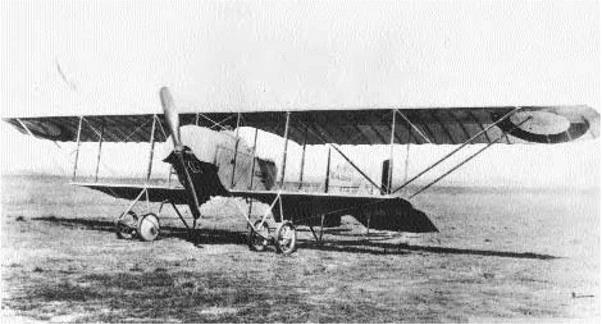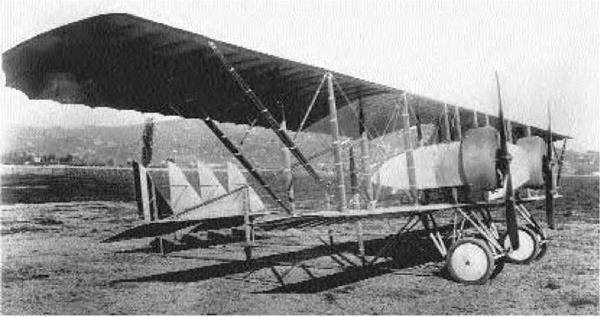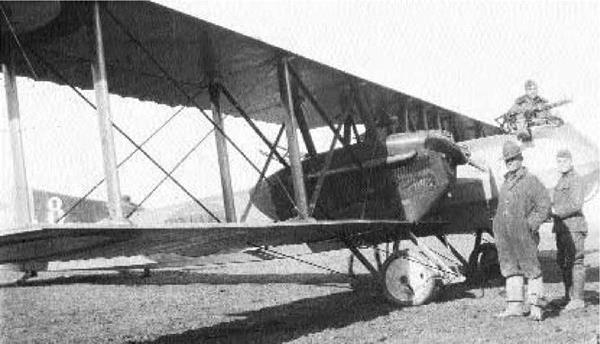. CASA C 101 Aviojet
Type: Trainer; Light Bomber
Dimensions: wingspan, 34 feet, 9 inches; length, 41 feet; height, 13 feet, 11 inches
Weights: empty, 7,716 pounds; gross, 13,889 pounds
Power plant: 1 x 4,300-pound thrust Garrett TFE731 turbofan engine
Performance: maximum speed, 501 miles per hour; ceiling, 42,00 feet; range, 322 miles
Armament: none, or up to 4,960 pounds of gunpods, bombs, or rockets
Service dates: 1981-
|
T |
he Aviojet is Spain’s first indigenously designed and constructed jet aircraft. Small, underpowered, and unassuming, it nevertheless attracts buyers from South America and the Middle East.
Construcciones Aeronauticas SA (CASA) was founded in 1923 and is one of Europe’s oldest airplane manufacturers. For many years it built foreign designs under license; in 1972 the firm absorbed His – pano Aviacion, a major competitor. Thus augmented, CASA was well positioned to fulfill a 1975 Spanish air force requirement for a new jet trainer to replace their outdated HA 200 Saettas. The main design emphasis was on simplicity and economy, not high performance. Yet the new machine also had to be capable of light strike missions. Faced with such varied specifications, CASA solicited technical advice from abroad. The U. S. firm Northrop was contracted to help design the wing and engine inlets, and Germany’s MBB assisted with the rear fuselage and tail section. The prototype C 101 performed its maiden flight in June 1978 as a low-wing monoplane with unswept wings. To reduce costs, it employs modular
construction, and the fuselage contains ample space capable of being retrofitted with different avionic systems as needed. The C 101 is powered by a commercial turbofan engine adapted for military use, which combines relatively good power with excellent fuel economy. A two-man crew is housed under a spacious canopy, with staggered seating to allow instructors a better view. For military applications a built-in bomb bay exists on the underside, and the wing also sports six pylons capable of holding weapons.
The Aviojet, although somewhat underpowered next to comparable French, British, and Italian machines, still possesses delightful characteristics at very affordable prices. As anticipated, the Spanish air force contracted for 88 machines under the designation Mirlo (Blackbird). Several of these were subsequently assigned to the national acrobatic squadron, Team Aguila. Such low-cost and good performance induced Chile, Honduras, and Jordan to place orders for trainers and attack craft. A dedicated attack version, the C 101DD, is currently under development.

Type: Reconnaissance; Trainer
Dimensions: wingspan, 43 feet; length, 22 feet; height, 8 feet, 6 inches Weights: empty, 959 pounds; gross, 1,565 pounds Power plant: 1 x 80-horsepower Le Rhone rotary engine
Performance: maximum speed, 67 miles per hour; ceiling, 13,000 feet; range, 240 miles Armament: none Service dates: 1914-1918
|
D |
espite its obsolete appearance, the Caudron G III was a popular French aircraft from the early days of World War I. Throughout its lengthy career it trained thousands of allied pilots.
The Caudron brothers, Gaston and Rene, were renowned as airplane builders long before the onset of hostilities in August 1914. Their first military design, the G III, was a development of an earlier civilian craft, the N.40, which was itself a frequent star at air shows across Europe. This Caudron machine was unique in being one of the few twin-boomed aircraft of its day. The crew of two sat in a short nacelle suspended between the two wings. To the rear, four booms supported a system of twin rudders; the craft was steered by wing-warping techniques. Despite its odd appearance, the G III was strongly built and possessed excellent climbing abilities. The French air force had only one squadron of G IIIs deployed when war broke out, but their excellent performance resulted in orders for more. In a display of patriotism and to facilitate rapid production, Caudron allowed other firms to construct the GIII without a license.
The Caudron’s climbing and handling made it valuable as a reconnaissance and artillery-spotting airplane. However, it was relatively slow and completely unarmed, so the advent of improved German fighters terminated its frontline usefulness by 1916. The G IIIs then rendered equally useful service as a trainer, for novice pilots appreciated its gentle and predicable qualities. They were also widely exported abroad, seeing service in the air forces of Italy, Great Britain, Belgium, and Russia. It gained considerable renown throughout 1917-1918, when G IIIs trained virtually every pilot attached to the American Expeditionary Force. Caudron and other companies ultimately assembled 2,450 of the ubiquitous G IIIs. In 1919 one plucky craft gained special notoriety in civilian hands when aviatrix Adrienne Bolland flew it over the Andes Mountains. That same year former French ace Jules Verdrines demonstrated its superb handling by successfully landing on the roof of the Galeries Lafayette department store in Paris!

Type: Reconnaissance; Light Bomber
Dimensions: wingspan, 56 feet, 5 inches; length, 23 feet, 7 inches; height, 8 feet, 6 inches Weights: empty, 1,102 pounds; gross, 2,923 pounds Power plant: 2 x 80-horsepower Le Rhone rotary engines
Performance: maximum speed, 82 miles per hour; ceiling, 14,108 feet; range, 250 miles Armament: 2 x 7.7mm machine guns; 220 pounds of bombs Service dates: 1915-1918
|
T |
he Caudron G IV was the first twin-engine aircraft deployed by Allied air units in World War I. Like its predecessor, it was fast-climbing, easy to fly, and completely reliable.
The Caudron G III was a well-liked aircraft, but by 1915 it had reached the limits of development. The Aviation Militaire (French air service) therefore determined to capitalize on the successful design by authorizing an improved, scaled-up version. When the prototype GIV appeared in March 1915, it was similar to but much larger than its forebear. The new machine possessed a larger wingspan and was powered by two cowled engines suspended between the wings. Their placement, in close proximity to the crew nacelle, was fortunate, for it made the craft more easily handled in case of an engine failure. Like the G III, the G IV also had four booms stretching backward to the tail section, although the rudders had been increased to four. It was also armed with a machine gun in the forward nacelle, as well as one pointed backward over the top
wing. Following successful test flights, the new Caudron entered French service in November 1915 and ultimately equipped 38 squadrons.
In the field, the G IV displayed many fine qualities reminiscent of the earlier craft. Delightful to fly, it climbed speedily and was easily maintained. As the Allies’ first twin-engine bomber, it was sent in massed formations to German targets as distant as the Rhineland. Unfortunately, the slow, lightly armed G IVs were easy prey for newer and more heavily armed German fighters. Having sustained heavy losses, most G IVs were withdrawn from frontline service by August 1916. They continued in British and Russian service much longer, however, and Italians prized the awkward-looking craft for its quick climbing ability, an essential trait when flying in heavily mountainous terrain. Toward the end of the war, G IVs were employed as trainers by the newly arrived Americans, who also praised its docility. A total of 1,358 were built.
|
Dimensions: 58 feet, 9 inches; length, 36 feet, 9 inches; height, 9 feet, 2 inches
Weights: empty, 3,130 pounds; gross, 4,773 pounds
Power plant: 2 x 215-horsepower Hispano-Suiza liquid-cooled engines
Performance: maximum speed, 114 miles per hour; ceiling, 19,520 feet; range, 350 miles
Armament: 5 x 7.7mm machine guns
Service dates: 1918-1922
|
A |
big, impressive machine, the R 11 was the most successful escort fighter of World War I. In that role it shot down scores of German fighters while protecting vulnerable French bombers.
By 1917 the Aviation Militaire (French air service) required a new, three-seat aircraft for extended reconnaissance usage. The Caudron company decided to update its older R 4 bomber with a smaller, lighter, more heavily armed machine. Consequently, the prototype R 11 emerged in March 1917 as a sleek, imposing craft. It displayed a more pointed nose than its predecessor, along with two bays of wing braces and an elongated vertical stabilizer. The fuselage was also oval-shaped in cross-section, with provisions for a single pilot and forward and rear gunners. As an added measure of safety, the R 11 was outfitted with dual controls: If a pilot were killed or wounded, the rear gunner could land it safely.
The big craft exhibited sprightly performance during testing, and the decision was made to enter production. Troubles with the Hispano-Suiza geared
motors greatly slowed their acquisition, and it was not until the spring of 1918 that R 11s were acquired in quantity. At that time the French headquarters Service Aeronautique had modified the R 11’s role from reconnaissance to escort fighter. The French reasoned that because the aircraft was fast and heavily armed, it provided a more stable gunnery platform compared to single-engine fighters. The R 11 consequently received the construction priorities usually reserved only for two other noted stalwarts, the Breguet 14 and the Salmson 2A2.
By the summer and fall of 1918, the big R 11s dutifully conducted massed formations of Breguet 14 bombers to and from targets in the Rhineland. Their heavy firepower accounted for the loss of many German fighters and saved several hundred French lives. Had the war continued another year, R 11s would have become one of the most import weapons in the French arsenal. Construction ended at 500 units, and the big fighters were retained in service until being declared obsolete in 1922.











